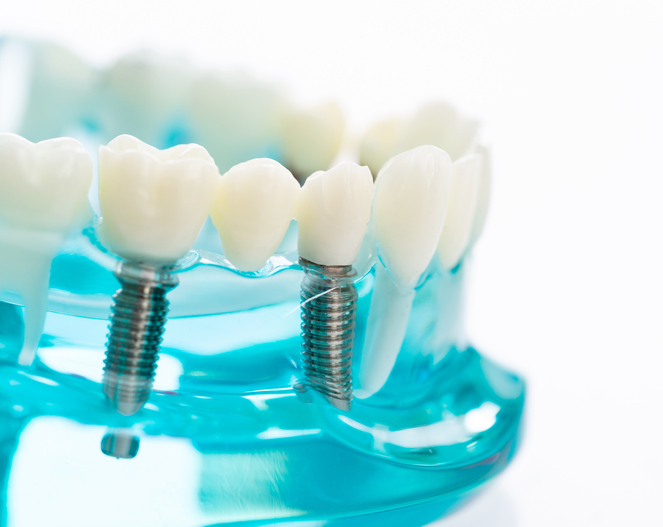
Dental implants are a great option whether you’re looking to replace a single tooth or all of your teeth. Dental implants are permanent, natural-looking, and don’t require any special care. Furthermore, dental implants can last a lifetime with proper maintenance. However, before you decide on dental implants, it’s worth knowing that there are different dental implants. Here’s what you need to know about the different types of dental implants.
What Are Dental Implants?
First, let’s understand what dental implants are. Dental implants are essentially artificial replacement teeth. They’re made up of a metal post or frame surgically implanted into your jawbone and a natural-looking tooth (or teeth) attached to the metal post or frame.
The abutment or connector piece connects the implant to the replacement tooth. Dental implants are a great option for people who are missing one or more teeth, as they provide a strong and stable foundation for replacement teeth.
Different Types of Dental Implants
Now that you know a little bit more about dental implants let’s look at the different dental implants.
Endosteal Implants
These are the most common type of dental implant. They’re made up of a metal screw surgically implanted into your jawbone. Once the implant has fused with your jawbone, a small metal post will be attached to the screw. This metal post will serve as the foundation for your replacement tooth.
Subperiosteal Implants
Subperiosteal implants are a good option for people with insufficient jawbone density to support an endosteal implant. They’re also a good option for people who can’t have or don’t want to have a bone graft.
This process involves surgically placing a metal frame or grid on the surface of your jawbone underneath your gum tissue. As your jawbone heals, it will fuse to the metal frame. Once this happens, the metal frame will support your replacement teeth.
Mini Implants
Mini dental implants are a good option for people looking to replace a single tooth. They’re also a good option for people who don’t have enough jawbone density to support a traditional dental implant.
Mini implants are smaller than traditional dental implants. They measure about 1.8-3.3 mm in diameter, while conventional dental implants are about 5-6mm. The smaller mini implants make them easier to place and have a shorter healing time.
All-on-4 Implants
All-on-4 dental implants are a type of dental implant used to support a full arch of replacement teeth. This type of implant is also sometimes referred to as “teeth in a day” or “same-day teeth” because the implants and replacement teeth can be placed all in one day.
The first step Dr. Brown will take is to place four dental implants in your jawbone. Once the implants have fused with your jawbone, a full arch of replacement teeth will be attached to the implants. The All-on-4 implant system can be used to support either upper or lower dentures.
It’s worth noting that the healing process for All-on-4 implants is generally longer than for other dental implants. It could take up to six months for your implants to fuse with your jawbone.
Other Procedures that May Be Needed with Dental Implants
If you’re getting dental implants, there’s a chance that you may need to have one or more additional procedures. Here are some of the most common procedures that may be combined with dental implants:
Bone Grafting
If you don’t have enough jawbone density to support a dental implant, you may need to have a bone graft. This is a procedure where a bone is taken from another area of your body and transplanted into your jawbone.
This procedure is typically done before dental implants are placed. It’s important to note that there is a healing period after a bone graft, so it may be several months before you can have your dental implants placed.
Ridge Augmentation
Ridge augmentation is a type of bone grafting used to treat receding gums. This condition can occur when you lose one or more teeth. When this happens, your gum tissue will begin to reduce, making your jawbone look sunken. Ridge augmentation is a procedure where the bone is grafted onto the jawbone to build up the area affected by the recession. This procedure is typically done before dental implants are placed.
Sinus Lift
If you’re getting dental implants in your upper jaw, you may need to have a sinus lift. This type of bone grafting is used to add bone to the sinus area. Furthermore, the sinuses are located close to the upper jaw, so this procedure can also help to make more room for dental implants.
Like other types of bone grafting, a sinuses lift is typically done before dental implants are placed. However, it’s worth noting that this is a more complex procedure than other types of bone grafting. As a result, the healing period after a sinus lift is usually longer. It may be several months before you can have your dental implants placed.
Your Perfect Smile Is Just a Call Away
Dental implants are a great way to achieve a beautiful and natural-looking smile. However, it’s important to note that dental implants are a major investment. As a result, it’s important to do your research and choose a type of implant that’s right for you.
If you’re considering dental implants, Dr. I. Stephen Brown can help. Dr. Brown is a highly experienced Periodontist who offers many implant solutions. Our team at The Perio Group will work with you to find the best implant solution for your individual needs. We use the latest technology and techniques to ensure you get the best results possible.
To learn more about our implant solutions, or to schedule a consultation, contact The Perio Group today.
